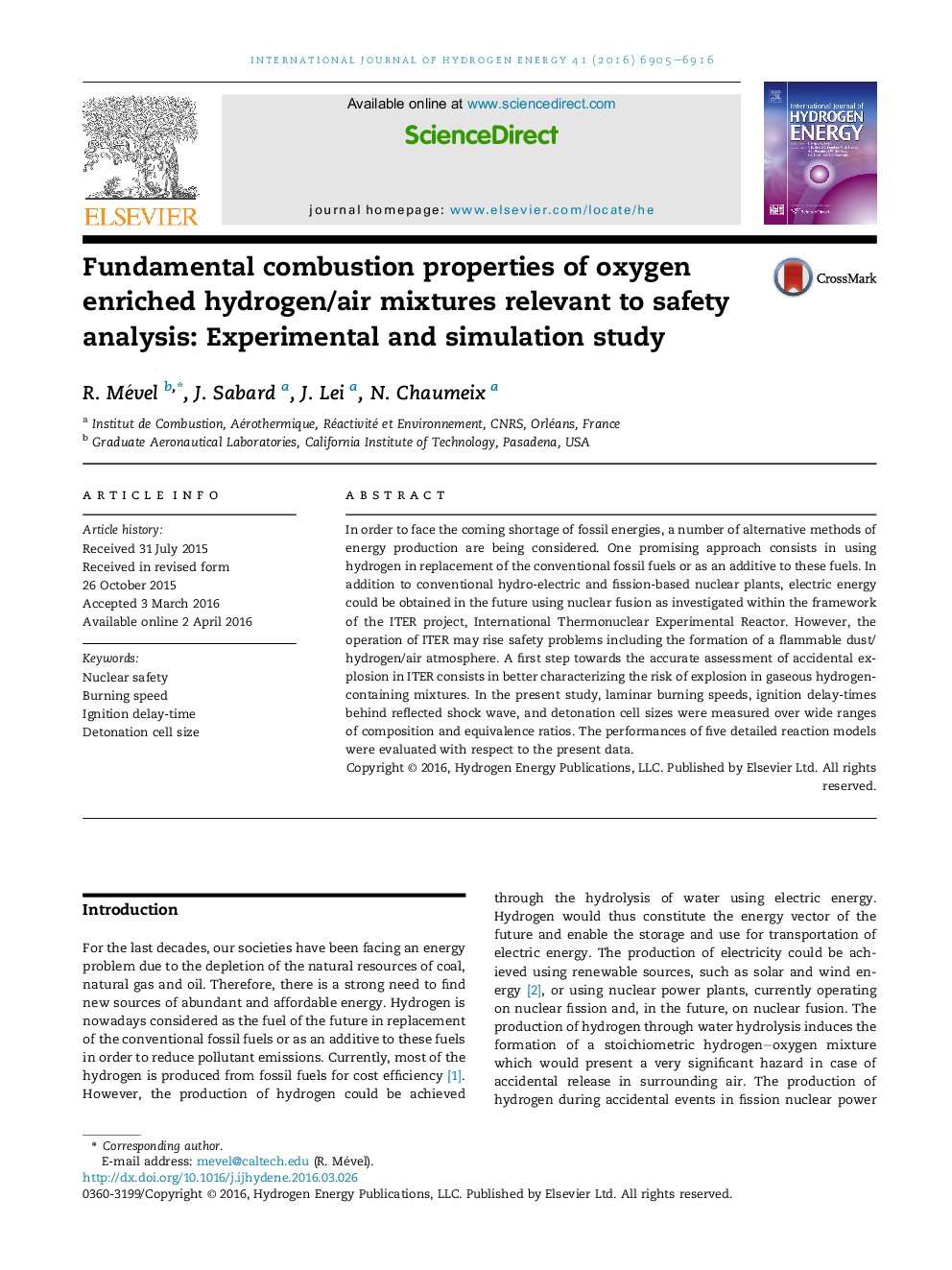| Article ID | Journal | Published Year | Pages | File Type |
|---|---|---|---|---|
| 1270696 | International Journal of Hydrogen Energy | 2016 | 12 Pages |
•Hydrogen hazards have to be characterized both for nuclear fission and fusion applications.•New experimental data for burning speed, ignition delay and detonation.•5 kinetic models were evaluated against a large set of experimental data.
In order to face the coming shortage of fossil energies, a number of alternative methods of energy production are being considered. One promising approach consists in using hydrogen in replacement of the conventional fossil fuels or as an additive to these fuels. In addition to conventional hydro-electric and fission-based nuclear plants, electric energy could be obtained in the future using nuclear fusion as investigated within the framework of the ITER project, International Thermonuclear Experimental Reactor. However, the operation of ITER may rise safety problems including the formation of a flammable dust/hydrogen/air atmosphere. A first step towards the accurate assessment of accidental explosion in ITER consists in better characterizing the risk of explosion in gaseous hydrogen-containing mixtures. In the present study, laminar burning speeds, ignition delay-times behind reflected shock wave, and detonation cell sizes were measured over wide ranges of composition and equivalence ratios. The performances of five detailed reaction models were evaluated with respect to the present data.
